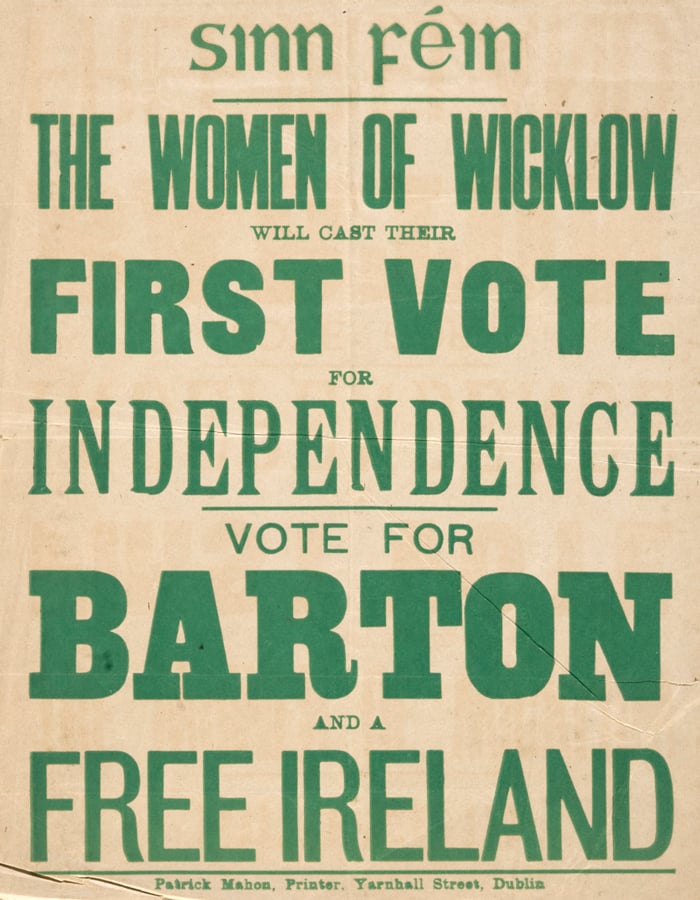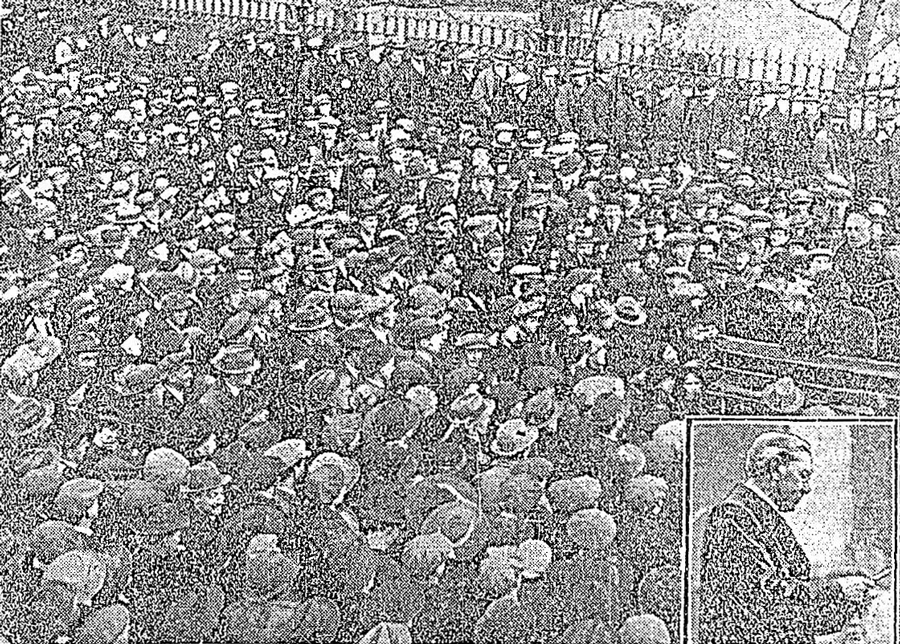Nationwide protests over treatment of Belfast prisoners
Sinn Féiner Robert Barton escapes from Mountjoy
Dublin, 25 March 1919 - Catholic parishes across the country yesterday held protests against the treatment of political prisoners in Belfast Jail. In Dublin, over 20 parishes organised protests, the principal one outside the Pro-Cathedral which drew a crowd that ran into the thousands.
The crowd was read a letter from the Lord Mayor of Dublin in which it was pointed out that the prisoners in Belfast had been held in solitary confinement in their cells and had been unable to attend mass since 21 January.
Many of the prisoners were kept in handcuffs for periods ranging from 4 days to 4 weeks and part of that time in handcuffs was spent with their hands behind their backs.
Around the country
Three Australian soldiers were among the attendance at a mass
meeting held in the chapel yard of St John’s Church in
Tralee, where the prisoners were described as being amongst the
‘most intelligent and most respectable and most religious in
the whole community’.
In Thurles, a letter was read to a large crowd from Most Reverend Dr Harty, while in Ulster, meetings were held in Armagh, Strabane, Derry and Belfast where Winifred Carney was in attendance.

A poster for Sinn Féiner Robert Barton from the General Election in 1918. (Image: National Library of Ireland)
Barton on the run
Last week, Sinn Féin MP for East Wicklow, Robert Barton,
escaped from Mountjoy Prison where he had been held for weeks
awaiting trial on a charge related to a speech he recently
delivered in Wicklow.
It is understood that when his cell was opened on the morning of 17 March, it was vacant. A dummy figure had been left in his bed to deceive the night warden. Also left behind was a letter addressed to the governor in which Barton stated that owing to discomfort he felt compelled to leave.
On closer inspection it was discovered that the cell window had been sawn away, though how the prisoner managed escape remains a mystery as Mr Barton was being held in the prison hospital which was surrounded by a 25 foot high wall which was guarded on the inside by 25 soldiers.
Barton was serving as an officer with the Dublin Fusiliers at the time of the Easter Rising.
[Editor's note: This is an article from Century Ireland, a fortnightly online newspaper, written from the perspective of a journalist 100 years ago, based on news reports of the time.]





















